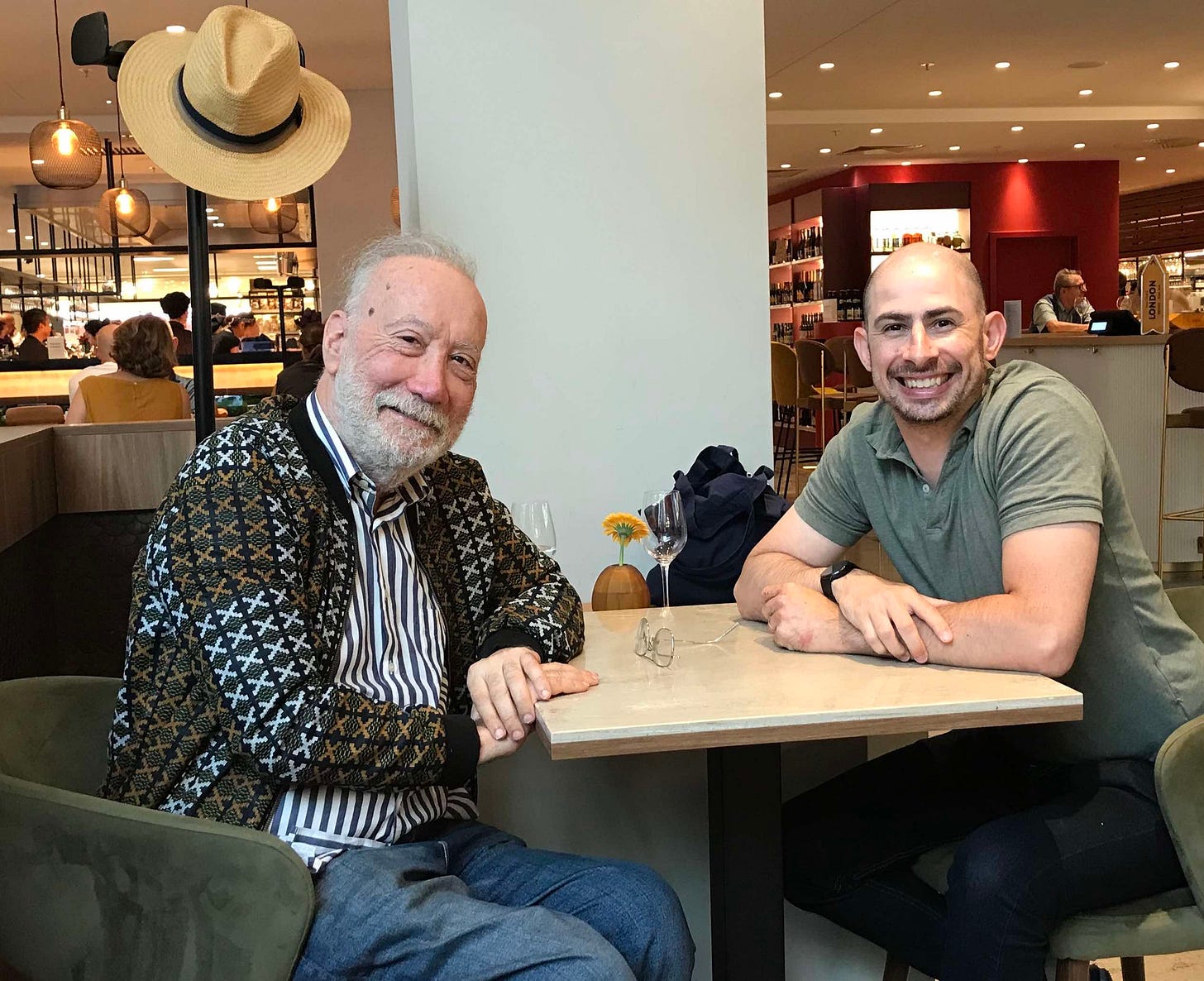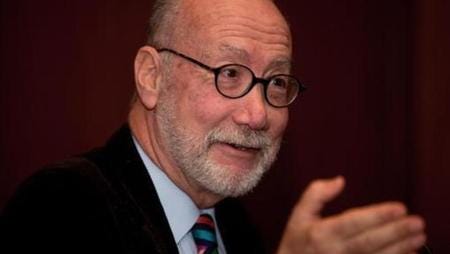In memory of Marc Pachter
The iconic museum director passed away recently at the age of 80
When Marc Pachter passed away a few weeks ago, most readers were likely not familiar with his career. Despite obituaries in the New York Times and Washington Post, Marc was not a household name the way a movie star or TV journalist would be. But in Marc’s service as both the director of the Smithsonian’s National Portrait Gallery and director of the National Museum of American History—for a period directing both museums at the same time—Marc’s work affected millions of people. Like most Americans, or visitors to Washington, you likely never knew.
Up until a few years ago, I was one of those people. In 2018, I was invited to join the Advisory Board (called the “Presidential Counselors”) of the National World War II Museum in New Orleans, and I met Marc at my first Counselors’ meeting. I didn’t know who he was, even though I had been in the field of public history for quite a few years already. To me, he was simply one of the many august scholars and luminaries seated around the boardroom table.
I was the youngest person on the board at that first meeting; most of the members were senior professors or retired museum leaders. One member, the world-famous historian Gerhard Weinberg, was already 90 years old. Because I was so junior, I tried to weigh in with commentary and ideas only periodically and strategically. Following the meeting, Marc came up to me and told me the museum and the field needed fresh ideas and new faces. He encouraged me to speak up, and to not forgo my seat at the table.
From there, Marc and I began a relationship that was as much a friendship as it was mentor-mentee. We texted and emailed. We traded URLs and social media posts. We saw each other in person, both at the Presidential Counselors meetings each year and in between, once in New York, another time in Berlin. We talked about everything: life, museums, the state of the world and the future. Marc was constantly looking ahead; he was, to quote Walt Whitman, “future-founding,” always searching for the moment in the culture that would signify the beginning of what was coming next. He was a visionary, restless for knowledge, and on the look-out for kindred spirits who saw what he could see.
What he never talked about was himself. Throughout the six years we knew each other, Marc never boasted about his career. His accomplishments I learned from other sources: public appearances, events, and old videos, several of which are in the C-SPAN video library. Marc was raised in Los Angeles, and paradoxically, never owned a car as an adult. He loved to walk, and believed in public transit. As a child his mother was very ill, and he watched as his father sacrificed his career to care for her. His father had studied to be an attorney, but could never practice law, instead running a local store to make ends meet.
Marc did not follow in his dad’s footsteps. His passion was for history, a passion that brought him to the East Coast, Harvard, and, ultimately to the Smithsonian. He rose from chief historian over the decades to become director of the National Portrait Gallery, then later acting director of the National Museum of American History. One of his major accomplishments was to raise $30 million keep a rare and famous portrait of George Washington from going to auction. He oversaw a complete re-imagination of the National Portrait Gallery during its closure to the public, extending its open hours from 5pm to 7pm to allow more people to see its artwork. Probably his most amazing accomplishment was to be director of two Smithsonian museums at the same time; in 2001 and 2002, while leading the Portrait Gallery, Marc stepped in to helm the National Museum of American History during a leadership transition. Somehow he managed to create an exhibit marking the one-year anniversary of the 9/11 terror attacks while performing the leadership necessary for both roles.
Marc loved to travel. Though he had an apartment in New York City, he was rarely there. After he retired, he traveled all over the world, and seemed to have friends and favorite spots everywhere he went. In 2022, we happened to be in Berlin at the same time. I told him to choose a location and I would meet him for lunch, since I knew he undoubtedly had a hidden gem up his sleeve. Indeed, he did: the top floor of the KaDeWe department store, on Wittenberg Platz, with its “legendary” food hall. “If you’re there about noon, look for the area that sells chocolates,” Marc wrote to me. “I’ll just roam about that area looking for you.”
Indeed, lunch that afternoon in Berlin lived up to the hype, at a location I never would have found on my own. We sat in the food hall for hours, talking about the world, what ailed it and how to fix it. Then we bought some German chocolates, walked to a nearby bench outside, and sat and talked some more. By then, Marc was using a cane, and clearly had lost a step physically. But mentally, he was sharp as ever. On the bench in the warm Berlin sun, we talked about family, his children and grandchildren, and my family that was in formation. That afternoon was probably my most memorable day with Marc that I ever had.

There was also the time that he showed up to the New York book release party for History, Disrupted and didn’t tell me. He sat quietly in the back, left before the reception began, then emailed me the next day to tell me how good a job I had done. There was the time that we went to BBQ dinner in New Orleans with a local radio personality and his wife, and talked about music and pop culture into the evening hours. Or the time I showed up at the hotel for a Presidential Counselors meeting and he yelled out to anyone who would listen, “The future is here!” Marc was always cheering me on, openly or quietly.
Marc died in February of this year. I was in Kosovo the day I found out; someone had posted a notice on LinkedIn, and I happened to check my social media over breakfast. He was traveling in Thailand and suffered a heart attack. When I read the news it was like a pound of lead fell on my back. I was paralyzed. The only thing that stopped me from crying were the strangers seated around me in the hotel. I was scheduled to deliver a keynote lecture at the Balkan Disinformation Summit, and my first instinct was to cancel and return to my hotel room. But I remembered what Marc told me: keep speaking. Don’t give up your seat at the table. I knew he’d want me to deliver my talk. If he could have been there, he would have been in the back of the room smiling. So I went and spoke—for him.
There are days when I look back at Marc and mine’s emails. For as much time as we spent together, there was so much that we never got to talk about. Our last email correspondence was at the end of 2023; I never got to tell him goodbye, or how much he meant to me. It has taken me until now to figure out how to put into words a proper tribute to him.
Marc Pachter the museum director received his well-deserved obituaries. But Marc Pachter the person is someone who you, dear reader, should know about. He was not just an icon in our field, and a man whose work, literally, impacted millions of visitors to Washington, D.C. He was a dreamer, a savant, an inquisitor, and a mensch. He would put his arm around someone and tell them to keep fighting, no matter the obstacles or the critics. Even until the end, he was always was out there looking to found the future. It is up to us to continue searching for it in his honor.
May his memory be a blessing.
*Note: this post was originally published on April 7, 2024, and was updated on April 9, 2024.



Jason, what a beautiful tribute.